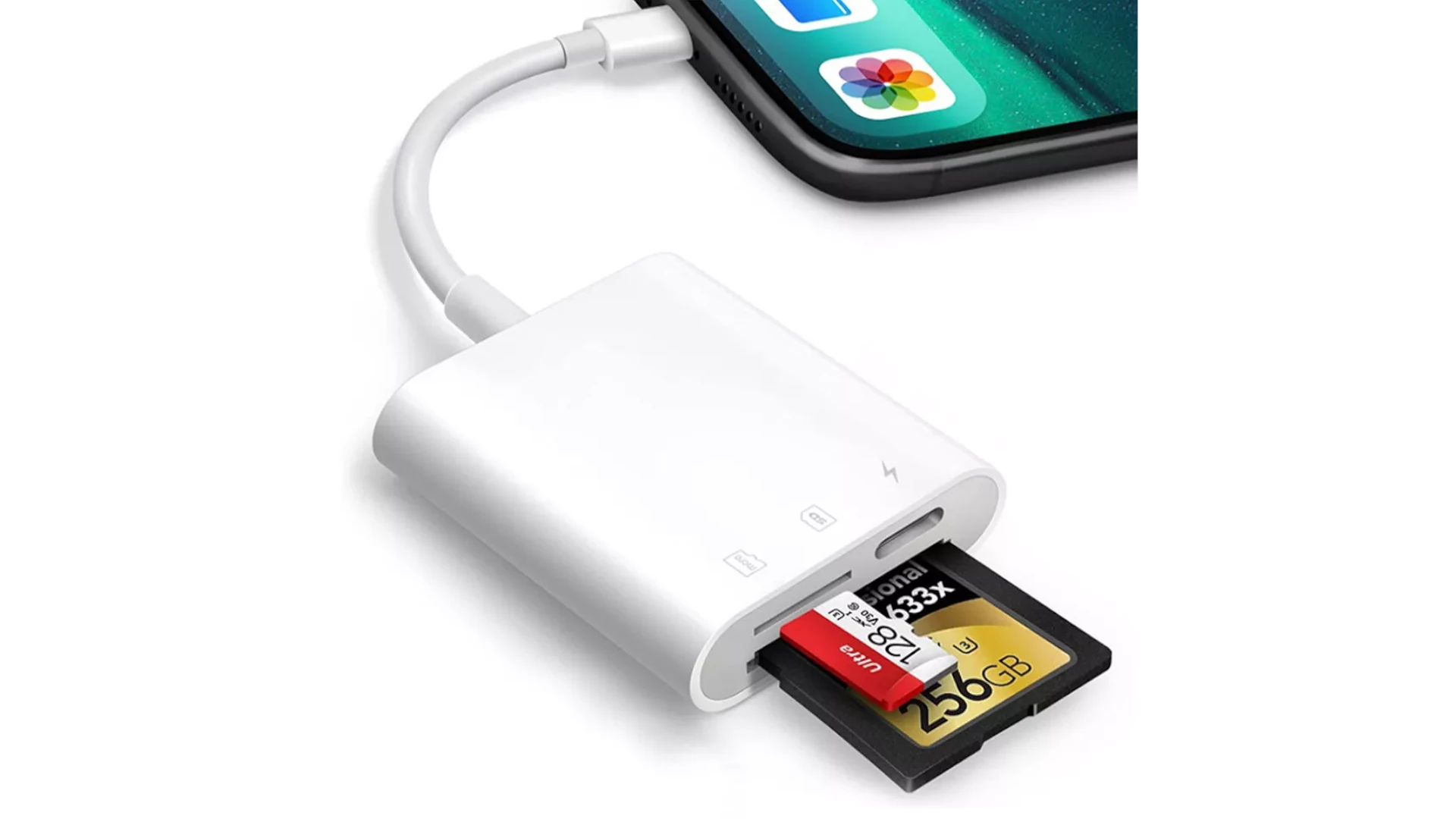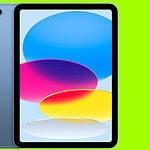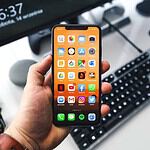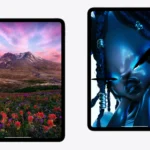Using an SD card reader with your iPhone can give you more storage options and it gives you the option to transfer photos and videos from memory cards to your phone. This tool is particularly useful for photographers and anyone in need of extra space. If you frequently run out of space for photos, videos, or other files, an SD card reader can be a lifesaver.
It makes it easy to transfer and access files from an SD card, effectively expanding your iPhone’s storage capacity on the go. With an SD card reader, you can easily increase your iPhone’s storage and access your files anytime, anywhere. Whether you’re a photographer, videographer, or just need extra space for your documents, this useful accessory can make a significant difference.
To use an SD card reader on iPhone, connect it to your phone’s charging port and insert your SD card. Your iPhone will spot the card fast. The Photos app will open and show you what’s on the card. You can then pick which files to move to your phone.
SD card readers work with many iPhones. They’re easy to set up and use. With a reader, you can free up space on your cards or back up your work on the go.
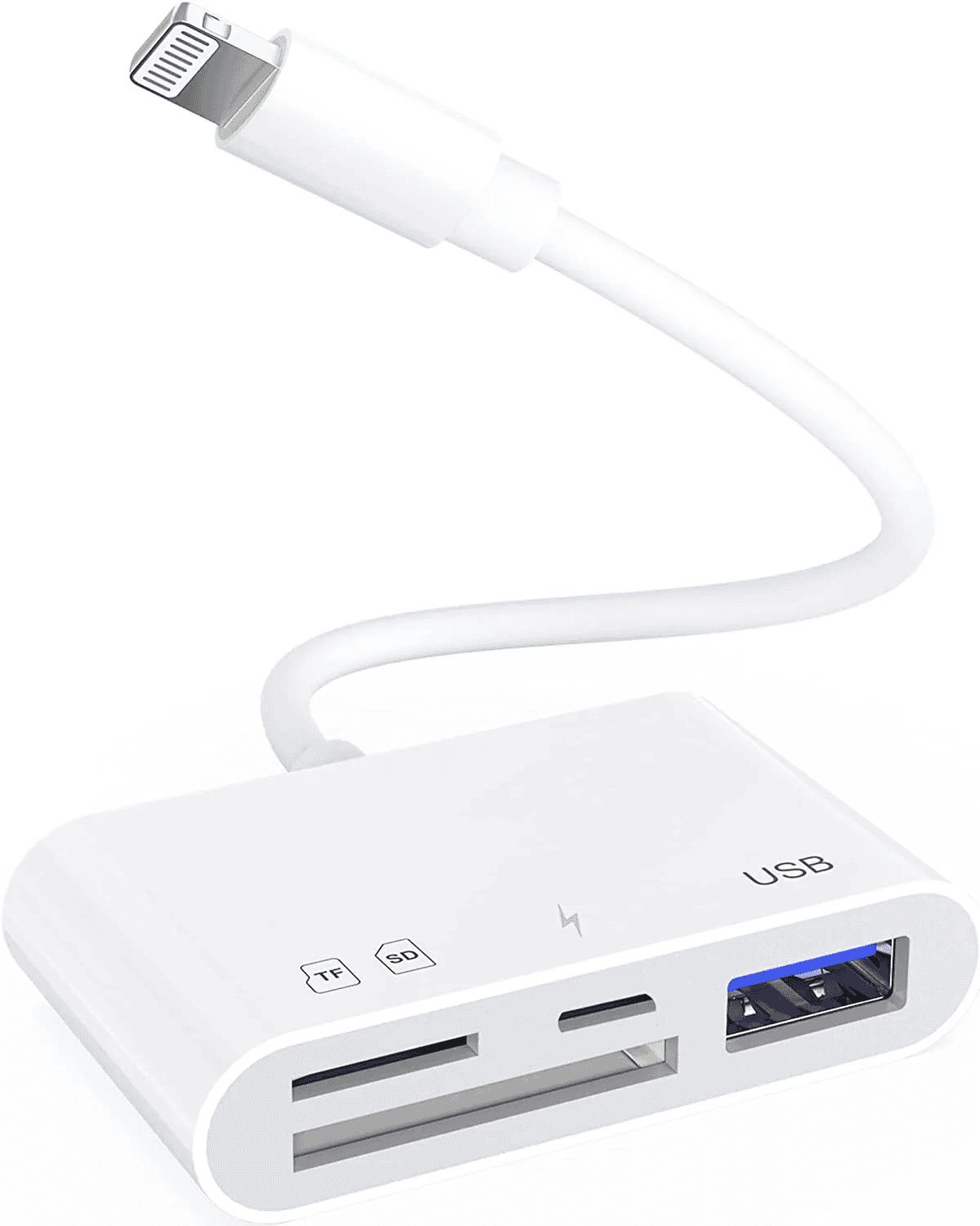
Expanding Your iPhone’s Storage with an SD Card Reader
Need extra space for your photos, videos, or files? An SD card reader can give your iPhone a storage boost. Let’s see how to use one.
What You’ll Need:
- An SD card
- An Apple SD card reader or a compatible third-party one
- Your iPhone
Choosing the Right SD Card Reader
| Adapter Name | Compatibility |
|---|---|
| Lightning to SD Card Camera Reader | iPhones with a Lightning port |
| USB-C to SD Card Camera Reader | iPhones with a USB-C port (iPhone 15 and later models) |
| Lightning to USB 3 Camera Adapter | iPhones with a Lightning port, also supports USB devices |
Steps to Connect and Use:
- Connect the Adapter: Plug the SD card reader into your iPhone’s charging port.
- Insert the SD Card: Gently slide the SD card into the reader’s slot.
- Access Your Files: Open the “Files” app on your iPhone.
- Navigate to the SD Card: Under the “Browse” tab, you’ll see the SD card listed under “Locations”. Tap on it to view its contents.
Tips:
- Transfer Photos & Videos: The Photos app will automatically detect the SD card and offer to import your media.
- Manage Files: Use the Files app to move, copy, or delete files on the SD card.
- Format the SD Card: If you’re having trouble accessing the SD card, try formatting it on your computer first (make sure to back up any important data!).
- Eject Safely: Always eject the SD card from the Files app before removing it from the reader.
Troubleshooting
- If your iPhone doesn’t recognize the SD card, try restarting your device or re-inserting the card.
- Make sure your SD card is formatted correctly (FAT32 or exFAT for larger cards).
- If you’re still having problems, contact Apple Support for further assistance.
Key Takeaways
- SD card readers connect to iPhones to transfer files
- The Photos app opens when a card is inserted
- Users can pick which photos and videos to import
Setting Up Your iPhone for SD Card Usage
Using an SD card reader with your iPhone opens up new storage options. You can move photos, videos, and other files between your phone and SD cards. This makes it easy to free up space or access content from other devices.
Identifying Compatible SD Card Readers
Not all SD card readers work with iPhones. Look for readers that connect to your iPhone’s Lightning port. Apple makes an official Lightning to SD Card Camera Reader. Other brands like Anker and SanDisk also sell iPhone-compatible readers.
Some readers support both SD and microSD cards. This gives you more options for card types. Check the product details to see what cards a reader can use.
Make sure the reader is MFi certified. This means it’s approved by Apple for use with iOS devices. MFi readers are safe and work well with iPhones.
Connecting the SD Card Reader to Your iPhone
Plug the SD card reader into your iPhone’s Lightning port. If you’re using a case, you may need to remove it first. The reader should fit snugly.
Next, insert your SD card into the reader. Make sure the card is facing the right way. Most readers have an arrow or icon showing how to insert the card.
Your iPhone should detect the card right away. If it doesn’t, try unplugging and reconnecting the reader.
First-Time Setup and iOS Updates
The first time you use an SD card reader, your iPhone might ask for permission to access it. Tap “Allow” to continue.
You’ll use the Files app to view and manage SD card contents. If you can’t see your SD card in Files, check for iOS updates. Go to Settings > General > Software Update.
Some third-party apps can also work with SD cards. Check the App Store for options that fit your needs. These apps might offer extra features for managing files.
Keep your iOS up to date for the best SD card reader performance. New updates can add features and fix bugs related to external storage.
Managing Files and Data Transfer
SD card readers let you move files between your iPhone and memory cards. You can import photos and videos use the Files app to manage data and follow best practices for storage.
Importing Photos and Videos to iPhone
The Photos app makes it easy to import media from your SD card. Plug in the reader and insert your card. Open Photos and tap Import. Pick the files you want to copy to your iPhone. You can choose to keep or delete the originals on the card after import.
Photos sorts new images into your library by date. It adds them to albums based on people and places too. You can make your own albums to organize imported photos and videos.
Using the Files App for File Management
The Files app helps you work with all types of files on your SD card. Open Files and look for your card under Locations. Tap to browse folders and files. You can view documents preview images and play videos right in the app.
To move files tap Select and choose what you want. Then use Copy or Move to put them elsewhere on your iPhone. You can also share files or save them to cloud storage like iCloud Drive.
Best Practices for Data Management and Storage
Keep your SD card organized with clear folder names. Delete old files you don’t need to free up space. Make sure to safely eject the card before unplugging the reader.
Back up important files in more than one place. You could use cloud storage or your computer as extra copies. Check how much free space is on your card and iPhone often.
Some file types may not work on iPhone. Convert files if needed before transfer. Rename long file names to find them easier later.

